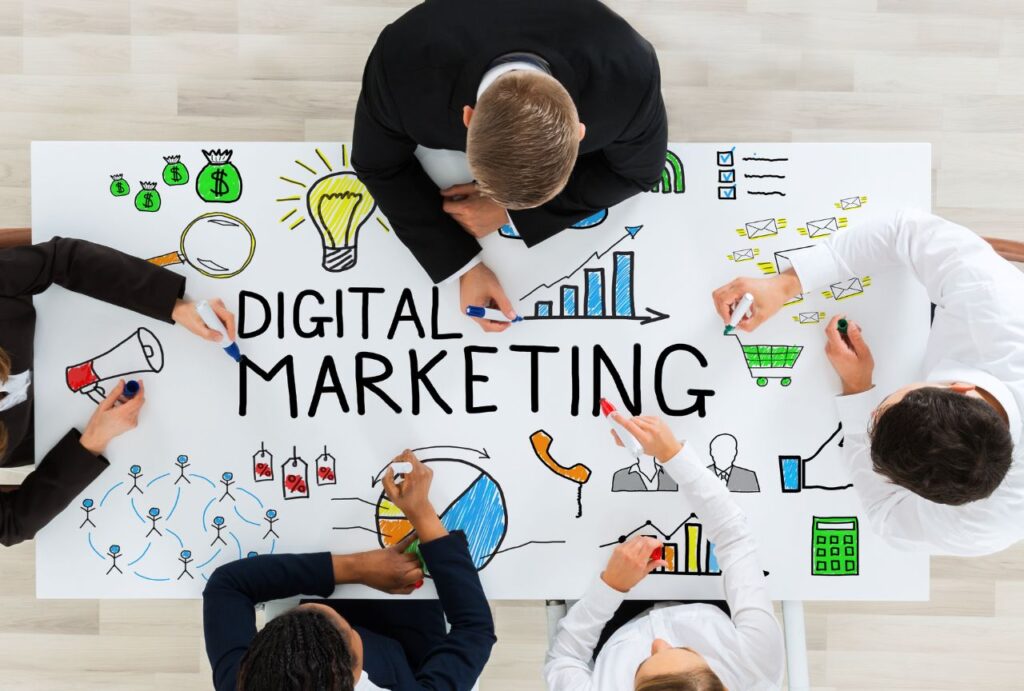AI has become the center of every discussion about making money online in 2025. Every day, new videos and posts appear promising effortless income through AI, yet most of them recycle the same unrealistic advice and very few ever see results. The reason is simple: these approaches rarely address real market needs or create genuine value.
AI is powerful, but it is not magic. It’s a tool that amplifies human skill and efficiency when used with purpose. The real opportunity lies in identifying where people or businesses already spend money and using AI to simplify, automate, or improve those areas. This is where real income begins, not in chasing trends, but in creating practical solutions that save time or make results better.
This article focuses on proven, realistic, and lesser-known ways to make money with AI in 2025. Each method you’ll read about is based on practical value that can be implemented without advanced coding or unrealistic promises.
1. AI Visual Staging for Real Estate Listings
AI visual staging uses artificial intelligence to digitally furnish and enhance photos of empty or outdated properties. It allows real estate agents and property owners to present listings in a more appealing way without spending money on physical staging.
Most online property listings perform better when the images look inviting and complete. Staged visuals attract more attention and help potential buyers or renters see the property’s potential. Many agents are willing to pay for this service because it increases listing engagement and shortens sales time.
– How to get started:
Choose an AI tool such as RoomGPT, Interior AI, or Virtual Staging AI. These platforms let you upload empty room photos and instantly generate realistic staged interiors in various styles. Practice creating different versions until you achieve natural-looking results.
Then, reach out to real estate agents, property managers, or landlords with a simple portfolio showing before-and-after results. Offer an affordable rate per image or a bundle per listing. You can also use Canva or Fotor to make professional presentation files.
2. Create AI Agents Using No-Code Tools (n8n, Make, or Zapier)
AI agents are automated workflows that perform specific tasks using AI. They can handle repetitive work such as answering messages, summarizing emails, writing short product descriptions, or creating reports.
Businesses constantly look for ways to save time and reduce manual work. With tools like n8n, Make, or Zapier, you can connect everyday apps (email, forms, spreadsheets) with AI models like ChatGPT to automate workflows that normally take hours.
– How to get started:
Learn the basics of one no-code automation tool, such as n8n. Use built-in templates to create a small automation, for example, an AI email reply system or a content generator. Once it works properly, you can offer this as a setup service for freelancers or small businesses.
You can price your service as a one-time setup fee or a monthly subscription to manage updates. Start simple, focus on reliability, and test each automation carefully before deploying it for clients.

Also Read: 7 Work When-You-Want Remote Jobs You Can Start Anytime
3. AI-Generated Video Channels
AI-generated video channels use AI to create full videos automatically or semi-automatically. This includes generating scripts, narration, visuals, and editing, allowing you to publish videos consistently on platforms such as YouTube, TikTok, or Instagram.
Video platforms continue to grow, but consistent posting requires time. AI tools make it possible to produce multiple videos faster while maintaining quality. Once a channel starts getting views, it can earn through ad revenue, affiliate links, or sponsorships.
– How to get started:
Pick a specific niche you can publish in consistently, such as productivity, AI tools, or business tips. Use ChatGPT for script creation, ElevenLabs or Play.ht for AI voiceovers, and Kilg AI, Sora, Pika Labs, Runway, or CapCut AI for generating and editing visuals.
Focus on creating short, informative videos first. Optimize titles and descriptions with keywords related to your topic to improve visibility. As your channel grows, you can expand to longer videos or add monetization options through affiliate products or digital courses.
4. AI Digital Products (Ebooks, Prompts, Recipes, Coloring Books, and More)
AI digital products are downloadable assets created with the help of AI. These can include ebooks, guides, prompt collections, recipe books, digital planners, coloring books, and more. Once created, they can be sold repeatedly on platforms such as Etsy, Gumroad, Payhip, or your own website.
Digital products require upfront work but no ongoing inventory or shipping. With AI tools, you can create high-quality digital assets in less time. Buyers are looking for ready-to-use content that solves specific problems or saves them time, such as pre-made templates, meal plans, or productivity guides.
– How to get started:
Start by identifying a profitable niche where people actively search for digital products such as wellness, personal finance, education, or productivity. Use ChatGPT or Claude to generate outlines, structured content, and formatting ideas. For ebooks or guides, tools like Canva, Notion, or Google Docs can be used for design and layout.
For creative digital items such as coloring books or planners, there are many tools like Midjourney, Kittl, or Leonardo AI help generate designs. Once finished, upload them to a digital marketplace.
Promote your listings through Pinterest, TikTok, or niche Facebook groups to reach organic buyers. Keep improving based on reviews and feedback. As you grow, you can build a collection of AI-powered digital products that sell passively every month.
5. Local Business Marketing Assets with AI
This involves using AI tools to create professional marketing materials for local businesses. These assets can include social media posts, promotional videos, flyers, menus, and ad creatives.
Many small businesses lack design or marketing expertise but need high-quality visuals and content to attract local customers. AI tools allow anyone to create professional results in a few minutes instead of hiring expensive agencies.
– How to get started:
Identify small businesses in your area that have weak online presence or outdated marketing visuals. Then, use tools like Canva, Runway, Leonardo AI, and ChatGPT to create marketing materials tailored to their brand.
For example, ChatGPT can generate social post captions and ad copy, while Canva or Leonardo AI can create matching visuals. If the business needs video promotions, use Pika Labs, Runway ML, or CapCut AI to create short advertising clips.
Once you have a few samples, reach out to local shops, restaurants, or service providers and show them how you can upgrade their visual marketing. You can charge per project or offer a monthly content package that includes social posts, short videos, and flyers.
6. Content Affiliate Marketing Using AI
Affiliate marketing is promoting other people’s products and earning a commission for every sale made through your link. AI simplifies the process by helping you create optimized content like blog posts, reviews, videos, or social media posts at scale and with consistency.
Content is what drives traffic and conversions in affiliate marketing. AI allows you to produce large amounts of SEO-friendly or social-ready content quickly, helping you grow visibility and reach more people without hiring writers or editors.
– How to get started:
Choose a niche that has proven affiliate programs, such as tech tools, fitness, finance, or lifestyle. Join affiliate networks like Impact, ShareASale, or Amazon Associates.
Use ChatGPT, Gemini, Jasper, or Writesonic to write blog posts, comparison articles, or short social posts promoting your affiliate products. For video content, use Pika Labs, Runway, or Synthesia to create short-form product explainers or reviews.
If you’re building a website, tools like SurferSEO or NeuronWriter can help optimize your articles for search visibility. Consistency is key — post regularly on blogs, TikTok, YouTube, or Pinterest.
Once your traffic grows, you can track your conversions using Google Analytics or Affilimate, and refine your content strategy based on what performs best.
Focus on content that genuinely helps users decide, such as “how-to” guides and product comparisons. Avoid overly promotional content — helpful content builds trust and converts better.
7. AI Product Mockups and Branding for E-commerce
AI mockup and branding services focus on helping online sellers present their products professionally. With AI, you can generate product visuals, lifestyle images, and brand materials that look realistic and high-end.
E-commerce brands need strong product presentation to stand out. Many sellers on Etsy, Shopify, or Amazon struggle to create professional images or consistent branding. AI tools now make this fast, affordable, and accessible to anyone with design sense.
– How to get started:
Use Google Nano Banana, Leonardo AI, Kittl, or Midjourney or many other specilized tools to generate creative mockups or branded visuals.
If you want to provide this as a service, start by offering custom mockups for product listings or rebranding packages. You can reach potential clients through Fiverr, Upwork, or by directly contacting small ecommerce stores.
For sellers creating their own product line, consistent AI branding helps build credibility. Combine product photos with AI-generated background scenes or lifestyle visuals using Runway or PhotoRoom. This saves time and money on professional photography while maintaining a polished look.
You can package this into a full-service offer that includes product mockups, banner designs, and brand identity kits. Businesses are willing to pay for cohesive branding that makes their store look professional and trustworthy.
The difference between those who make money with AI and those who only talk about it is action. Learning the tools is important, but applying them to something specific is what creates results. Choose one method that aligns with your skills or interests, study how others are succeeding in that area, and start small.
Whether it’s automating tasks, creating content, or selling digital products, consistency and real execution are what matter. Spend time mastering one niche before moving to another. The opportunities with AI in 2025 are expanding quickly, and those who focus, test, and improve will see real income growth. Start today with what you can control and build from there.



